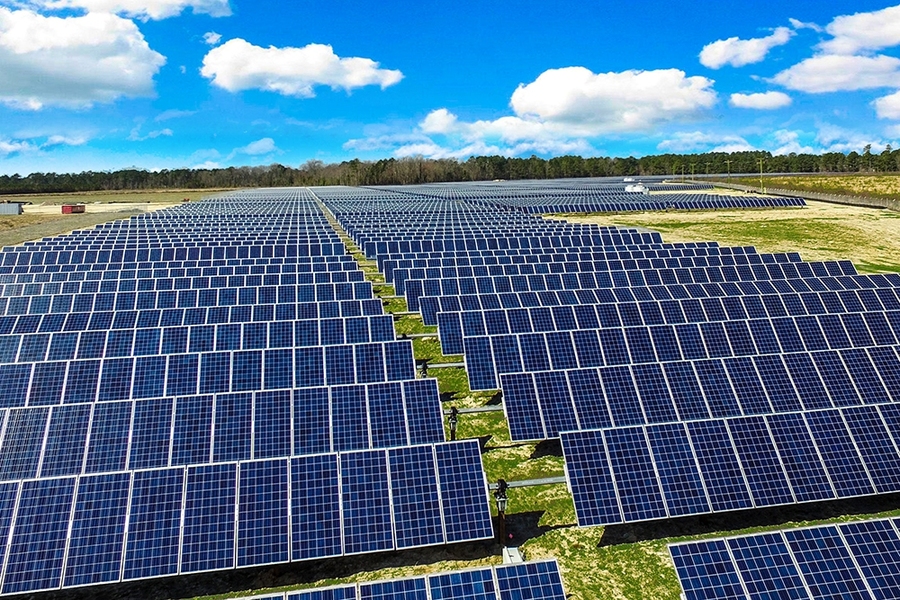solar panels
TNPSC Group 1 Mains & TNPSC Group 2 Mains
Daily Answer Writing Practice – Day 5
Day 5 Question:
“Renewable energy, while environmentally friendly, has significant lifecycle environmental costs.” Discuss this statement with specific reference to the production, use, and disposal of solar panels. How can these challenges be addressed to ensure the sustainability of solar energy?
Answer
1. Environmental Costs in Solar Panel Production
The production of solar panels involves several stages, each with associated environmental impacts:
- Resource Extraction:
- Solar panels are primarily made of silicon, which requires mining quartz and processing it into high-purity silicon. This process is energy-intensive and generates significant carbon emissions.
- Other materials, such as silver, aluminium, and rare earth elements, are also used. Mining these materials can lead to habitat destruction, water pollution, and soil degradation.
- Manufacturing Process:
- The production of photovoltaic (PV) cells involves high-temperature processes that consume large amounts of energy, often derived from fossil fuels. This contributes to greenhouse gas emissions.
- The use of toxic chemicals, such as hydrochloric acid and sulfuric acid, in the manufacturing process can lead to air and water pollution if not properly managed.
- Energy Payback Time:
- Solar panels do not produce emissions during operation, but the energy used in their production (embodied energy) must be offset by the clean energy they generate over their lifetime. The energy payback time for solar panels is typically 1-4 years, depending on the technology and location.
- Environmental Costs in Solar Panel Disposal
Solar panels have a lifespan of 25-30 years, after which they must be decommissioned and disposed of. The disposal process poses several environmental challenges:
- E-Waste Management:
- Solar panels contain hazardous materials, such as lead and cadmium, which can leach into soil and water if not properly disposed of.
- The growing volume of decommissioned solar panels is contributing to electronic waste (e-waste), which is a global environmental concern.
- Recycling Challenges:
- Recycling solar panels is technically complex and expensive due to the need to separate and recover different materials (e.g., glass, silicon, metals).
- Currently, recycling infrastructure for solar panels is underdeveloped, and a significant portion of decommissioned panels end up in landfills.
- Land Use and Waste:
- Large-scale solar farms require significant land use, which can lead to habitat disruption and land degradation. At the end of their lifecycle, the disposal of panels can further strain land resources.
- Mitigating the Lifecycle Environmental Costs
To address these challenges, several measures can be implemented:
- Sustainable Manufacturing:
- Transitioning to renewable energy sources for manufacturing processes can reduce the carbon footprint of solar panel production.
- Developing more efficient and less resource-intensive manufacturing techniques can minimize environmental impacts.
- Improved Recycling Technologies:
- Investing in research and development to improve solar panel recycling methods can make the process more economically viable and environmentally friendly.
- Governments can implement regulations requiring manufacturers to take responsibility for the end-of-life management of their products (extended producer responsibility).
- Circular Economy Approaches:
- Designing solar panels for easier disassembly and recycling can reduce waste and recover valuable materials.
- Promoting the reuse and refurbishment of solar panels can extend their lifespan and reduce the need for new production.
- Policy and Regulation:
- Governments can incentivize the adoption of sustainable practices in the solar industry through subsidies, tax breaks, and stricter environmental regulations.
- International cooperation is needed to establish global standards for solar panel recycling and disposal.
Conclusion
- While solar energy is a key component of the transition to a low-carbon future, its lifecycle environmental costs cannot be ignored.
- However, with advancements in technology, improved recycling infrastructure, and supportive policies, these environmental impacts can be mitigated.
- A holistic approach that balances the benefits of renewable energy with sustainable lifecycle management is essential to ensure that solar power remains a truly environmentally friendly solution.



Leave a Reply
Want to join the discussion?Feel free to contribute!